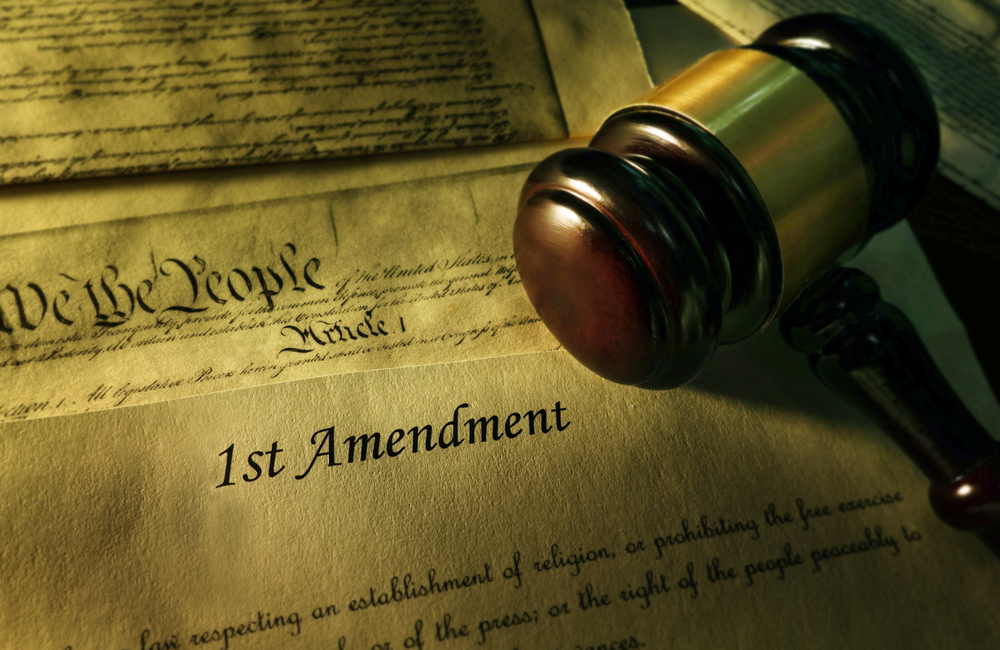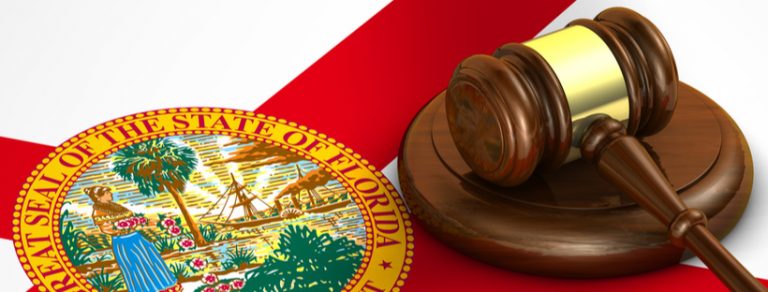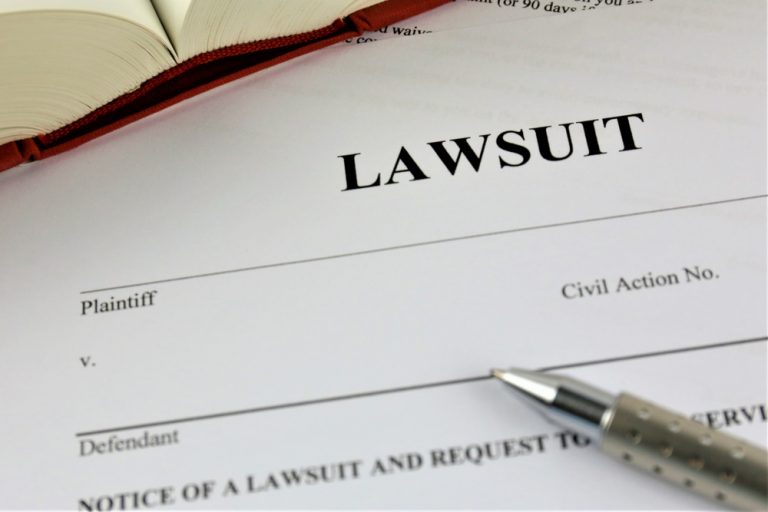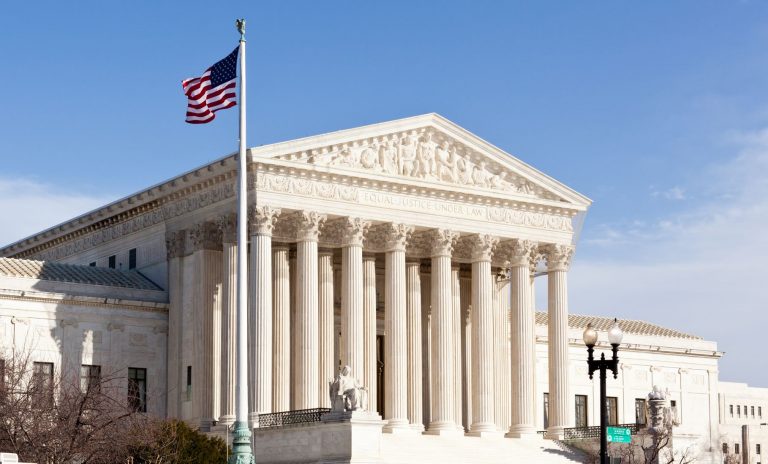First Amendment Wheel Doesn’t Stop Spinning: What Risk Managers Need to Know for the New School Year
First Amendment Wheel Doesn’t Stop Spinning: What Risk Managers Need to Know for the New School Year
As the school year begins, a heightened focus has been placed on schools both nationally and at the local level. Schools are becoming the battlefield where some of the most high-profile cultural clashes occur, which means more legal developments affecting public education. Risk managers must navigate these decisions, understand what they mean, and ensure their schools and districts are in compliance when it comes to treating students, parents, and staff fairly. To that end, the most recent U.S. Supreme Court term saw significant changes regarding the First Amendment and its bearing on public spaces. Three particular decisions have effects that schools will acutely feel.
Religious Expression Generally Okay as Long as It Is Not Coercive
In Kennedy v. Bremerton School District, a high school football coach claimed his First Amendment rights were violated because his school district did not allow him to engage in prayer at midfield after football games. While he sought only to pray alone, sometimes the coach’s athletes, and even athletes from opposing teams, would join him. Notably, the coach never required anyone to join him. Regardless, the district was concerned about observers who saw the coach praying and worried it would look like the district approved or endorsed this religious expression. Ultimately, the Supreme Court sided with the coach, finding that both the Free Speech and Free Exercise Clauses of the First Amendment protected his conduct. The Court also dismissed the school district’s concerns about any Establishment Clause violations.
So what does it mean? For starters, it means schools must be tolerant of staff who wish to engage in private prayer and not make any knee-jerk reactions for fear of being seen as endorsing religion. Free speech and free exercise rights do not stand in opposition to schools’ rights (and responsibilities) to avoid establishing or favoring a particular religion or religious activity. Thus, schools concerned about an act of religious expression should not ask whether allowing the religious conduct looks like the school is “endorsing” religion; in Kennedy, the Court forcefully rejected any kind of “endorsement” test. Instead, evaluating religious expression must be done through the lens of historical practices and understandings: what was done in the past, how was it interpreted, and what was understood to be acceptable? Our country’s long history of tolerating and allowing particular private speech by public employees, including religious speech, means the school district in Kennedy erred in prohibiting the coach from engaging in his sincerely held beliefs.
In practice, the chief goal of risk managers should be avoiding singling out individuals engaged in religious expression, especially if that religious activity is not coercive. Is the individual compelling others to participate in their expression? Or is it a private act of prayer or reflection? The former has been and still is prohibited. Had the coach in Kennedy demanded or required his players to join him while he prayed, it would have been a completely different scenario, and the Supreme Court almost certainly would have reached an opposite conclusion. However, because the student-athletes willinglychose to join him, his actions were therefore not coercive, and the school district should not have banned him from praying. Risk managers should also remember that even if allowing religious activity offends some observers, this alone does not create a problem. This, the Supreme Court found, would mean banning religious expression in preference to secular views. Generally speaking, permitting private speech, so long as it is not coercive, is acceptable.
Religious School Vouchers Are A-Okay
In Carson ex rel. O.C. v. Makin, the Supreme Court struck down Maine’s tuition assistance program because the program did not allow parents to use tuition vouchers at religious schools. This decision is a continuation of the Court’s recent precedents that when the government offers a benefit, it cannot disqualify applicants just because they are religious.
So what does it mean? Day-to-day, Carson probably will not affect risk managers as much. States that have or are considering tuition voucher programs will need to ensure that they are in compliance. As for states whose programs already allow religious schools to receive such vouchers, they needn’t worry. But at the school district level, it means that for widely offered programs—e.g., allowing groups to offer a prayer before a school board meeting or renting out school facilities for private use on the weekend—they must be as impartial as possible in deciding who may participate. Turning away individuals seeking a benefit offered to all simply because they are religious (or potentially affiliated with a group considered undesirable) is generally impermissible.
Programs that Exclude Religious Groups Are a No-Go
While Shurtleff v. City of Boston did not involve a school—rather, it dealt with Boston’s City Hall—its impact extends to schools nonetheless. That’s because the Supreme Court reiterated that when the government (including public schools) permits private individuals to participate in public programs, it cannot exclude a would-be participant solely because of their religious affiliation. Here, the Court found Boston’s program of allowing private groups to raise flags outside of city hall could not exclude a religious organization that asked to fly their Christian flag, especially when the city had allowed other prospective groups to raise their respective flags and never denied another applicant.
So what does it mean? Like Makin, this is another reminder that public entities cannot exclude individuals just because they have religious affiliations. Another takeaway is that clear policies serve as solid protection against claims of arbitrary or unfair discrimination. Namely, for any programs that could be seen as implicating a school’s “speech”—e.g., raising flags or broadcasting messages over loudspeakers—clear parameters about the school’s level of involvement and degree of control over the speech can prevent would-be participants from claiming unfair exclusion.
Consider Boston’s flag-flying program: it had no official written policies and had no meaningful involvement in selecting the flags that would be raised; instead, it embraced a “come-one-come-all” attitude. This meant the Supreme Court did not buy the city’s arguments that it sought to control the message being sent by these flags. By opening the program up to all applicants—and by never denying any until a religious organization sought to participate—the city ceded control over the message. Risk managers should be mindful of any school programs that similarly relinquish control to private individuals and consider the messages sent by these programs.
What’s Next?
If the above seems like a lot to digest, unfortunately the carousel of school-focused litigation does not look like it is slowing down anytime soon. Currently, the Court of Appeals for the Eleventh Circuit is weighing whether to affirm a lower court ruling that required a Jacksonville, Florida school district to allow a male transgender student to use the restroom that matches his preferred gender.[1] Whichever way the court goes, while its decision will only be binding on Alabama, Florida, and Georgia, it will nonetheless have nationwide effects as more lawsuits are launched by transgender students who see bathroom restrictions as violating their rights, and courts elsewhere look for decisions interpreting equal protection laws.
The Eleventh Circuit is also considering an appeal by a Christian school arguing its First Amendment rights were violated when it was not allowed to pray over the stadium loudspeaker before a championship football game.[2] This case could end up before the U.S. Supreme Court since a decision in the school’s favor may conflict with previous Supreme Court rulings that found similar conduct violated the Establishment Clause.[3] If the school gets its way, religious institutions will likely increasingly request the opportunity to pray before athletic competitions and districts would probably be wise to grant those requests, lest they get haled into court.
Head spinning yet? There’s more. Let’s step outside schools for other litigation brewing that risk managers should be watching. In mid-August, the Court of Appeals for the Fourth Circuit (which covers Maryland, North Carolina, South Carolina, Virginia, West Virginia, and federal administrative agencies) found that gender dysphoria is a qualifying disability under the Americans with Disabilities Act (ADA) in a case by a female transgender inmate challenging her placement in a men’s prison.[4] Again, while this decision is technically only binding on those states and agencies, its practical impact means individuals could argue their transgender identity is an ADA disability in lawsuits nationwide. Schools whose employees claim that they are being denied accommodations because of their gender dysphoria may end up defending a disability discrimination lawsuit.
In mid-August, a federal district court in north Florida blocked part of the “Stop WOKE” Act from going into effect.[5] Private employers and HR training consultants argued that the law violated their First Amendment rights to engage in open and free exchanges with employees. The court, in turn, blocked those portions of the law that restricted how employers can and cannot discuss race and sex during HR training. While the Florida government has signaled it will appeal this decision, interim rulings such as these are helpful guidance for schools and HR staff in shaping training for new employees in light of similar legislation popping up across the country.
So what does it mean? Education is a field where the law never stops changing. Recent history shows this trend is likely not slowing down; if anything, it will only increase as courts show a greater willingness to revisit previous decisions, reinterpret longstanding practices, and closely scrutinize new legislation. In the wake of this shifting landscape, the best advice we can offer is that actions taken in haste rarely end well. If you or your colleagues are concerned about an employee or student’s actions and are worried about how to deal with them, it is best practice to consult with your school district’s attorney or outside counsel before making a decision that could result in a lawsuit. Students, parents, and school staff are only growing in awareness of their rights and demonstrating a greater willingness than ever before to flex those rights. Remaining vigilant in the face of this will help risk managers reduce their school’s liability and prevent unnecessary litigation.
[1] See Adams v. Sch. Bd. of St. Johns Cnty., 9 F.4th 1369, 1372 (11th Cir. 2021).
[2] See Cambridge Christian Sch., Inc. v. Fla. High Sch. Athletic Ass’n, Inc., No. 22-11222 (11th Cir. appeal filed Apr. 15, 2022).
[3] See, e.g., Santa Fe Indep. Sch. Dist. v. Doe, 530 U.S. 290 (2000).
[4] See Williams v. Kincaid, No. 21-2030, — F.4th —-, 2022 WL 3364824 (4th Cir. Aug. 16, 2022).
[5] See Honeyfund.com, Inc. v. DeSantis, No. 4:22cv227-MW/MAF, — F. Supp. 3d —-, 2022 WL 3486962 (N.D. Fla. Aug. 18, 2022).










